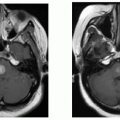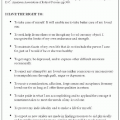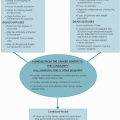all suffering but to use the best of one’s knowledge, skill, and abilities to provide the best possible care (6). Palliative care teams also must appreciate the finitude of medicine. Not only is medicine not the source of eternal life but it often fails at being the source of perfect relief of suffering or “a good death.” Attempts to “totalize” the dying experience with medicine can lead to actions held by many to be wrong or evil in the name of compassion (7). Ironically, palliative care providers must be reminded of the original hospice movement goals of not medicinalizing, institutionalizing, or trying to hide death.
TABLE 58.1 Selected ethical frameworks and foundations | ||||||||||||||||||||||||||
|---|---|---|---|---|---|---|---|---|---|---|---|---|---|---|---|---|---|---|---|---|---|---|---|---|---|---|
|
address clinical ethical decision making and describes key legal considerations and give an overview of issues important in palliative care. Hospice and palliative medicine, unlike many other specialities, has less univocity regarding many ethical issues. Thus, the chapter will not emphasize professional standards. The American Academy of Hospice and Palliative Medicine (AAHPM) has ethical statements readily available, which are frequently updated and sometimes changed (www.aahpm.org).
TABLE 58.2 Definitions associated with hospice and palliative care | |||||||||
|---|---|---|---|---|---|---|---|---|---|
|
optional for adults with decisional capacity (or determined by their appropriate proxy decision maker). This negative or material right has become accepted in clinical care and ethical discourse and is legal precedence. Further, it is constitutive of palliative care.
protection given they cannot exercise this right of refusal, it was appropriate for the State of Missouri to impose additional safeguards in the form of the clear and convincing evidence standard in light of its interest in preserving life. After the Supreme Court’s decision, the Cruzans petitioned the trial court in Missouri, again requesting discontinuation of tube feedings. Her coworkers testified that Cruzan stated she would not like to live “like a vegetable.” Cruzan’s treating physician and court-appointed guardian also supported discontinuation of ANH. As a result, the Missouri court authorized the discontinuation of feeding, and Cruzan died shortly thereafter. The publicity surrounding this case fostered interest in advance directives and health-care proxy appointments. It also generated support for the federal Patient Self-Determination Act passed in 1991 (17), which requires some health facilities to present patients with information on advance health-care directives.
Stay updated, free articles. Join our Telegram channel

Full access? Get Clinical Tree







